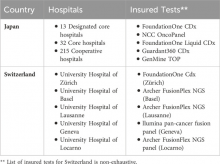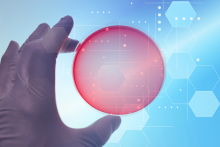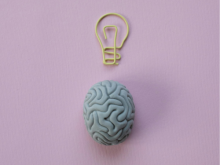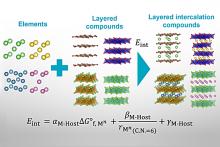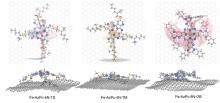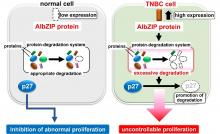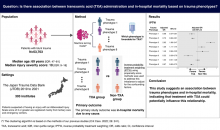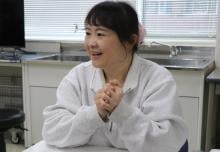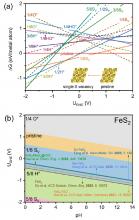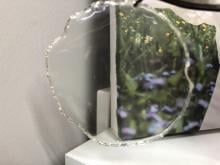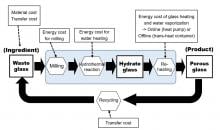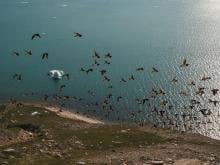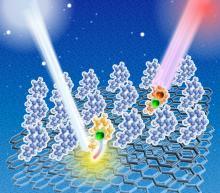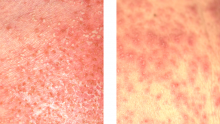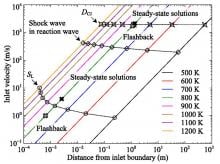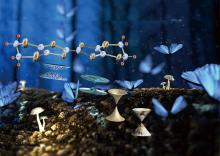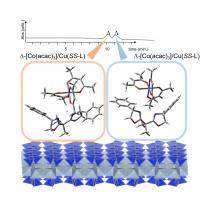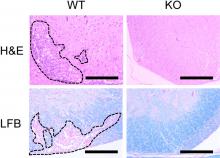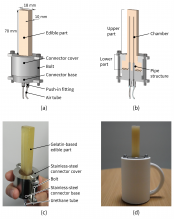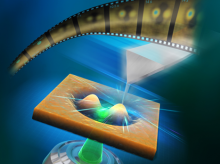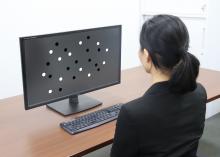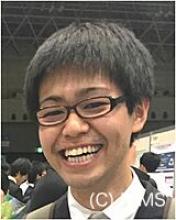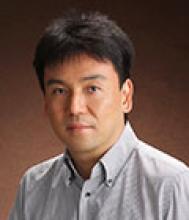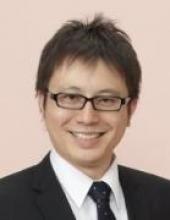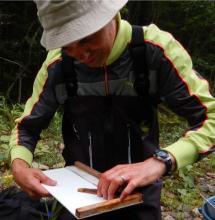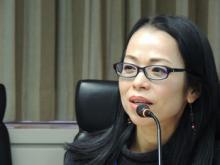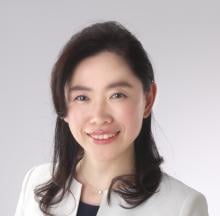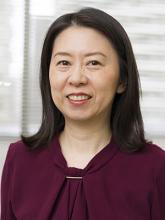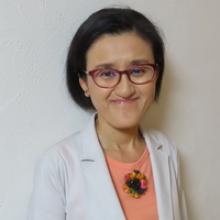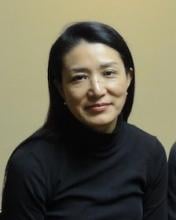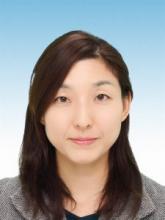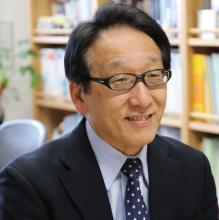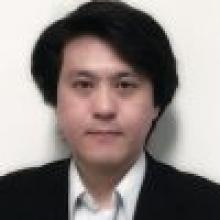Japan
News
08 Apr 2024
Researchers from Japan’s Osaka University and Switzerland’s University of Lausanne explored the ethical considerations and current status of cancer multigene panel testing access in their countries. Despite cultural and healthcare differences, they found common national barriers: limited test availability, insufficient patient information, and variable insurance coverage. The study underscores the need for more equitable genetic medicine, suggesting improvements in test access, patient education, and insurance policies.
04 Apr 2024
Researchers from Osaka University and Imperial College London have used operando optical spectroscopy in conjunction with other spectroscopic techniques to follow the oxygen evolution reaction (OER) for an iridium oxide catalyst. Using complementary techniques to probe the catalytic process at different pH values allowed them to observe the effect of the extended environment around the intermediate species involved. The findings are expected to contribute to optimizing the OER for green hydrogen production.
03 Apr 2024
New survey from Springer Nature shows that amongst researchers in Japan, approximately a third of the respondents are unsure how to share their research beyond academic publications and presentations, indicating the need for further support for their research to reach and have influence on the wider community
03 Apr 2024
Insights into ethical and legal ramifications of growing brain organoids from human fetal brain tissue
03 Apr 2024
Disease-causing E. coli among species labeled electrochemically using organic metallic nanohybrids
03 Apr 2024
Researchers from the Institute of Industrial Science, The University of Tokyo and collaborating partners have created guidelines for the design of intercalated materials, which will accelerate research on energy storage, electronics, and more
01 Apr 2024
Researchers from Osaka University found that exposure to environmental carcinogens and psychological distress significantly decreases happy life expectancy, a measure of the lifespan during which an individual experiences subjective emotional wellbeing. These findings suggest that developing public health policies to reduce exposure to these chemicals could help people live longer, happier lives.
29 Mar 2024
The lipids in some herbal teas have been identified in detail for the first time, preparing the ground for investigating their contribution to the health benefits of the teas.
28 Mar 2024
Tohoku University researchers have created a reliable means of predicting the performance of a new and promising type of catalysts. Their breakthrough will speed up the development of efficient catalysts for both alkaline and acidic environments, thereby saving time and effort in future endeavors to create better fuel cells.
28 Mar 2024
A case study on the effects of open waste burning on air quality in Northwestern Greenland calls attention to the importance of no-one-left-behind sustainable air quality monitoring in the Arctic region.
27 Mar 2024
Researchers from Monash University and Osaka University have unveiled a groundbreaking discovery regarding the pivotal role of sensory neurons in orchestrating tissue repair and regeneration, offering significant promise for patients with poorly healing tissues and diabetes.
26 Mar 2024
Numerical basis found for picosecond laser endpoints in effective clinical treatments with fewer complications
25 Mar 2024
May prove to be therapeutic target in breast cancer treatment
25 Mar 2024
Researchers from Osaka University used machine learning to identify subgroups of trauma patients who are more likely to survive their injuries if treated with tranexamic acid. This treatment controls bleeding and thereby prevents death from hemorrhage. The team also identified subgroups of trauma patients who do not benefit from tranexamic acid. These findings should help guide treatment decisions after traumatic injury and provide trauma patients with more personalized care.
25 Mar 2024
A marine biologist is inching closer to conquering science’s over 120-year pursuit to farm lobsters by letting these “dragons of the sea” get real weird.
22 Mar 2024
The means to synthesize ammonia from nitrogen and hydrogen gas has been around since the early 20th century. Despite its current widespread usage, it has significant environmental drawbacks. Now, researchers from Tohoku University have unveiled a new, environmentally friendly means of producing this widely used chemical.
21 Mar 2024
Cellulose, abundantly available from plant biomass, can be converted into molecules used to make a new class of recyclable polymers, to sustainably replace some plastics.
19 Mar 2024
Researchers from Osaka University conducted a series of participatory deliberation workshops at Osaka University in which the participants were asked to consider issues of future society and manufacturing, in general, and as they relate to hydrothermally produced porous glass. In workshops where the perspective of “imaginary future generations” was adopted, participants’ perceptions of the technology’s feasibility and future potentiality changed significantly.
18 Mar 2024
Researchers from Osaka University developed a system that enables projection mapping within an illuminated environment. Several standard projectors and one large-aperture projector reproduce the environmental illumination in all areas except for the target object, whereas texture projectors display the texture on the unilluminated object’s surface. Experiments show that participants perceived the objects using surface-color mode instead of aperture-color mode, verifying that the proposed system has the potential to produce highly realistic interactive environments.
15 Mar 2024
Acoustic recordings of a colony of little auks reveal their nocturnal activities and offer valuable monitoring means for avian biology in the Arctic.
15 Mar 2024
Understanding electron behavior and surface structure of triphenylene thin film molecules deposited on graphite substrates under light irradiation
15 Mar 2024
Two rare skin conditions with similar symptoms can be mistaken for each other, so a scoring system has been formulated to aid physicians in distinguishing two diseases
15 Mar 2024
Researchers from Tohoku University have theoretically linked ignition and deflagration in a combustion system, unlocking new configurations for stable, efficient combustion engines due to the possible existence of any number of steady-state solutions.
15 Mar 2024
The “scope of action” and the velocity of Dirac electrons in an organic material
15 Mar 2024
A packing material has been developed for chromatographic resolution on the basis of a clay mineral. The material is an adduct of chiral Cu(II) complex and synthetic hectorite.
12 Mar 2024
A new study highlights a potential therapeutic target for immune-related disorders, such as multiple sclerosis and asthma.
11 Mar 2024
Japanese researchers have broken new ground by creating an edible robot and examining the unique experience of eating it while it moves. This robot, made of gelatin and sugar, pushes the boundaries of how we interact with food and technology. The study delves into the sensory and psychological aspects of consuming a moving robot, offering fresh perspectives on the convergence of robotics with culinary arts and medical applications.
11 Mar 2024
Researchers from Osaka University used tip-scan high-speed atomic force microscopy combined with an optical microscope to observe light-induced deformation of azo-polymer films. The process could be followed in real time, and the film patterns were found to change with the polarization of the light source. The observations will contribute to the use of azo-polymers in applications such as optical data storage, and the approach is expected to be useful across materials science and physical chemistry.
08 Mar 2024
Findings could aid research into how information presentation might prevent human error
05 Mar 2024
A novel method for studying genes in testicular cells of living animals could lead to breakthroughs in male contraception and fertility treatments.
Events
09 Oct 2019
Asia's Premier Partnering Event for the Global Biotechnology Industry

28 Feb 2019
The Nagoya Medal Award is awarded every year to two organic chemists who have made significant original contributions to the field. This year’s Gold Medal will be presented to Professor David W. W. MacMillan (Princeton University, USA), and the Silver Medal will be presented to Professor Chihaya Adachi (Kyushu University, Japan).

04 Oct 2018
ISTbM-6 with the 14th Hirata Award and the 4th Tsuneko and Reiji Okazaki Award.

10 Jun 2018
The Kavli IPMU invites you gain insight into how physics predicts our Universe may exist alongside an infinite number of other universes, and how philosophy suggests the world as we know it may not exist at all.

22 Dec 2017
The Nagoya Medal Award is awarded every year to two organic chemists who have made significant original contributions to the field. This year’s Gold Medal will be presented to Prof. “Bert” Meijer (Eindhoven University of Technology, Netherlands), and the Silver Medal will be presented to Prof. Hiroaki Suga (The University of Tokyo, Japan).

20 Nov 2017
ISTbM-5 with the 13th Hirata Award and the 3rd Tsuneko and Reiji Okazaki Award

03 Aug 2017
The International ERATO Itami Molecular Nanocarbon Symposium 2017 will be held on August 3-4, 2017 at Nagoya University, Japan. This symposium will focus on recent achievements in the synthesis, utilization, and analysis of structurally well-defined nanocarbons and related materials.

27 Jan 2017
The Nagoya Medal Award is awarded every year to two organic chemists who have made significant original contributions to the field. This year’s Gold Medal is awarded to Professor Stephen Buchwald of MIT (USA) and the Silver Medal is awarded to Professor Masaya Sawamura of Hokkaido University (Japan).

12 Dec 2016
ISTbM-4 with the 12th Hirata Award and the 2nd Tsuneko and Reiji Okazaki Award

17 Oct 2016
This symposium will highlight research and education for the creation of a healthy society toward the achievement of United Nations Sustainable Development Goals (SDGs).
The lectures and discussions cover the themes including the promotion of safe water environments, hazardous material elimination, and mother-and-child health.
27 Jul 2016
This year, we will hold its second symposium to further seek novel molecules and materials for dissecting and controlling mechano-nanoarchitectonics of life. Presentations in the symposium are made by a wide variety of speakers from material science, sensors and actuators, mechanochemistry, interfacial sciences, and of course biology.

26 Jun 2016
On behalf of the ISEE-ISES AC2016 Sapporo organizing committees, it is great pleasure to welcome you to the 5th ISEE Asia Chapter and the first joint symposium of ISEE and ISES, Asia chapter. The program theme is “Environment, Health, and Sustainable Society” and will be held in Sapporo, Hokkaido, Japan on June 26-29th, 2016.

13 Jun 2016
The First International Symposium on Advanced Soft Matter: Celebrating the Kick-off of the Global Station for Soft Matter, GI-CoRE, Hokkaido University, Japan.

22 Jan 2016
The Nagoya Medal Award is awarded every year to two organic chemists who have made significant original contributions to the field. This year’s Gold Medal is awarded to Professor Stuart Schreiber of the HHMI, Broad Institute of MIT & Harvard, Harvard University, USA and the Silver Medal is awarded to Professor Zhaomin Hou of RIKEN, Japan.

25 May 2015
This international symposium brings together world-class scientists in biology and chemistry, including, Dr. Ashraf Brik (Technion-Israel Institute of Technology, Israel) and Dr. Feng Zhang (Broad Institute of MIT and Harvard, USA).
21 Oct 2014
GREEN Open Seminar will be held on 21st October, 2014, to have a lecture by Dr. Hiroaki Benten, Assistant Professor, Department of Polymer Chemistry, Kyoto University.

27 Oct 2014
The Nagoya Medal Award is awarded every year to two organic chemists who have made significant original contributions to the field. This year’s Gold Medal is awarded to Professor John F. Hartwig of the University of California, Berkeley, USA and the Silver Medal is awarded to Prof. Itaru Hamachi of Kyoto University, Japan.

12 May 2014
The 2nd International Symposium on Transformative Bio-Molecules 2014 is an annual event held by the ITbM, inviting prestigious speakers from around the world to enhance interdisciplinary research between molecular synthetic chemistry and plant biology.
01 Jul 2013
NIMS Conference 2013 will be discussing the latest innovations in nano electronics. Registration deadline is June 23 and abstract submission deadline is May 17.

26 Aug 2012
Congress Theme: 'Beyond the Limit of Histochemistry'

15 Nov 2012
The Irago Conference 2012 (Asia-Pacific Interdisciplinary Research Conference 2012) will be held November 15-16, 2012 in Irago, Aichi prefecture, Japan.
04 Jun 2012
National Institute for Materials Science (NIMS) is pleased to announce “NIMS Conference 2012” to be held from June 4 to 6 2012. The theme is “Structural Materials Science and Strategy for Sustainability - Back to the Basics“
29 Feb 2012
The MANA International Symposium, jointly held with International Center for Young Scientist (ICYS) is organized once a year to disseminate the research results of MANA and ICYS to a wide audience.
17 Feb 2012
In this symposium, advancement of R & D especially on renewable electrical energy sources and structural materials for seismic safety using nanotechnology will be reviewed.

17 Nov 2011
This conference provides an ‘interdisciplinary-platform’ to enhance mutual understanding between scientists, engineers, policy makers, and experts from a wide spectrum of pure and applied sciences in order to resolve the daunting global issues facing mankind.
17 Oct 2011
This Conference focus on the development in micro and nanotechnologies. It will take place at Hotel Sinaia in Romania from 17th to 20th October 2011.
15 Sep 2011
SIBCON-2011 is the leading Conference in Siberia for learning the latest development on control systems, compound semiconductors, RF devices and microwave circuit applications.
19 Sep 2011
The ASAM-3 is organised by Kyushu University for interdisciplinary discussion between scientists from Asian universities, research institutions and companies on chemistry, physics and biology of advanced materials. Deadline for Early Registration is August 1, 2011
Researchers
National Institute for Materials Science (NIMS)
Dr Ryota Tamate is a materials scientist at the Center for Green Research on Energy and Environmental Materials, National Institute for Materials Science, Japan.
Nagoya University
Yukikazu Takeoka is a materials engineer at the Department of Molecular Design & Engineering at Nagoya University, Japan.
Hokkaido University
Daisuke Hirano is an assistant professor at the Ocean and Sea Ice Dynamics Group, the Institute of Low Temperature Science of Hokkaido University, Japan.
Hokkaido University
Jorge García Molinos is an aquatic ecologist broadly interested in global change ecology and macroecology.
I am a sociologist studying domestic violence and sexual violence situations and measures in Japan, and am the director of two NGOs, All Japan Women’s Shelter Network and Rape Crisis Center in Hiroshima. As an NGO activist, we, All Japan Women’s Shelter Network, submitted “The Request for the Prevention of DV and Child Abuse under the Condition of Novel Coronavirus Countermeasures” to the Japanese government on March 30. This letter of request drew more attention than we expected, and many newspapers and TV quickly covered the issue. A lot of people have talked about this online. The prime minister and minister of gender equality have since addressed the issue in statements, and the Cabinet has approved emergency funding for expanded consultation services.
As a young research practitioner, I’ve been working with more than 1,000 female college students who participate in study abroad programs. As a women’s school graduate, I believe in the power of female education in women’s school while there are sceptical views of its existence.
My research on how medieval Japanese royal women strategized to overcome disparity is relevant in a time when COVID-19 has exposed ongoing problems tied to the vulnerability of (Japanese) women and gender stereotypes (e.g. recent remarks by Tokyo Olympics chief Mori).
Tohoku University
I am engaged in the development of a new device for embryo evaluation which measures embryo oxygen consumption and a new medication for infertility. Recently, I focused on causative genes of disorders of sex development and searched pathogenic variants using a whole-genome reference panel constructed by Tohoku Medical Megabank Organization.
Tohoku University
I am a leading expert in the reconstruction of an artificial cell membrane as a novel system for screening side effects of drugs on the heart. This system can assess the potential risks of drugs that unintentionally interfere with the function of membrane proteins in the heart muscle.
Masako Tanaka is a practitioner, activist and academic focusing on gender and migration issues in Japan. She is a professor at the Department of Global Studies at Sophia University, Japan.
Kyoto University
Mitsuyo Wada-Marciano is a professor at the Graduate School of Letters, Kyoto University, Japan. She is specialized in Japanese and East Asian cinemas with focus on digital media, disaster film, eco-cinema, and post-colonial cinema in cases of Japan, Taiwan, and Korea.
Hokkaido University
Madoka Ono is an associate professor at the Research Institute for Electronic Science/Green Nanotechnology Research Center at Hokkaido University and is the principal researcher at AGC Inc. Materials Integration Laboratories.
Tohoku University
Director of the International Research Institute of Disaster Science (IRIDeS) at Tohoku University since April 2014, and also is a professor of Tsunami Engineering
Hokkaido University
Professor, Faculty of Environmental Science, Hokkaido University
National Institute for Materials Science (NIMS)
Materials scientist studying structure and microstructure of metal and alloys by transmission electron microscopy. Specialize in light metals and quasicrystals.
Kyoto University
Masanori Shimono is an associate professor at Kyoto University Graduate School of Medicine.
Giants in history
Ruby Sakae Hirose (1904 – 1960) was a Japanese-American scientist whose research contributed significantly to our understanding of blood clotting, allergies and cancer.
Haisako Koyama (1916 – 1997) was a Japanese solar observer whose dedication to recording sunspots – cooler parts of the sun’s surface that appear dark – produced a sunspot record of historic importance.
Michiaki Takahashi (17 February 1928 – 16 December 2013) was a Japanese virologist who developed the first chickenpox vaccine.
Toshiko Yuasa (11 December 1909 – 1 February 1980) was the first Japanese female physicist whose research on radioactivity shed light on beta decay – the process in which an atom emits a beta particle (electron) and turns into a different element.
Baron Kitasato Shibasaburo (29 January 1856 – 13 June 1931) was a Japanese physician and bacteriologist whose work led to a new understanding of preventing and treating tetanus, diphtheria and anthrax.
By isolating soil microorganisms and studying the compounds they produce, Satoshi Omura (born 1935) discovered almost 500 organic compounds with unique properties that were produced by these microorganisms, including many new antibiotics.
In 1915, pathologist Katsusaburo Yamagiwa and his research assistant Koichi Ichikawa became the first to prove that chronic exposure to chemicals can cause cancer.
In 1915, Koichi Ichikawa along with pathologist Katsusaburo Yamagiwa became the first to prove that chronic exposure to chemicals can cause cancer.
Reiji Okazaki (8 October 1930 – 1 August 1975) and Tsuneko (7 June 1933) were a Japanese couple who discovered Okazaki fragments – short sequences of DNA that are synthesized during DNA replication and linked together to form a continuous strand.
Tsuneko (7 June 1933) and Reiji Okazaki (8 October 1930 – 1 August 1975) were a Japanese couple who discovered Okazaki fragments – short sequences of DNA that are synthesized during DNA replication and linked together to form a continuous strand.
Husband and wife team, Kimishige (3 December 1925 – 6 July 2018) and Teruko Ishizaka (28 September 1926 – 4 June 2019) discovered the antibody class Immunoglobulin E (IgE) that triggers allergic reactions. They also discovered that IgE antibodies attach to white blood cells, known as mast cells, releasing histamine, which causes allergic reactions.
Husband and wife team, Kimishige (3 December 1925 – 6 July 2018) and Teruko Ishizaka (28 September 1926 – 4 June 2019) discovered the antibody class Immunoglobulin E (IgE) that triggers allergic reactions. They also discovered that IgE antibodies attach to white blood cells, known as mast cells, releasing histamine, which causes allergic reactions.
Japanese chemist Takamine Jokichi (3 November 1854 – 22 July 1922) founded the Tokyo Artificial Fertilizer Company, where he isolated a starch-digesting enzyme (named takadiastase) from the fungus Aspergillus oryzae.
Hideki Yukawa (23 January 1907 – 8 September 1981) was awarded the Nobel Prize in Physics in 1949 for predicting the existence of the pi meson subatomic particle. Japan’s first Nobel laureate, Yakawa also expressed his support for nuclear disarmament by signing the Russell–Einstein Manifesto in 1955.
Shinichiro Tomonaga (31 March 1906 – 8 July 1979), together with Richard Feynman and Julian Schwinger, was awarded the Nobel Prize in Physics in 1965, for their contributions to advance the field of quantum electrodynamics. Tomonaga was also a strong proponent of peace, who actively campaigned against the proliferation of nuclear weapons and promoted the peaceful use of nuclear energy.
Japanese chemist Kenichi Fukui (4 October 1918 – 9 January 1998) was the first Asian scientist to be awarded the Nobel Prize in Chemistry. Together with Roald Hoffman, he received this honour in 1981 for his independent research into the mechanisms of chemical reactions.
Minoru Shirota (April 23, 1899 – March 10, 1982) was a Japanese microbiologist who invented the popular fermented drink Yakult.
Japanese physicist Ukichiro Nakaya (1900-1962) made the world’s first artificial snowflakes. He started his research on snow crystals in the early 1930s at Hokkaido University, where there is an unlimited supply of natural snow in winter. By taking over 3,000 photographs, he established a classification of natural snow crystals and described their relationship with weather conditions.
The techniques that make industrial pearl culturing possible were developed over a century ago at the Misaki Marine Biological Station in Japan. The station’s first director, Professor Kakichi Mitsukuri, emphasized to Kokichi Mikimoto in 1890 that stimulating pearl sac formation was important for pearl growth, and they went on to successfully develop methods for culturing pearls.
The field of solid-state ionics originated in Europe, but Takehiko Takahashi of Nagoya University in Japan was the first to coin the term ‘solid ionics’ in 1967. ‘Solid-state ionics’ first appeared in 1971 in another of his papers, and was likely a play on ‘solid-state electronics’, another rapidly growing field at the time.
Chika Kuroda (24 March 1884 – 8 November 1968) was a Japanese chemist whose research focussed on the structures of natural pigments.
Motoo Kimura (13 November 1924 – 13 November 1994) was a Japanese theoretical population geneticist who is best remembered for developing the neutral theory of molecular evolution.
Osamu Shimomura (27 August 1928 – 19 October 2018) was a Japanese organic chemist and marine biologist who dedicated his career to understanding how organisms emitted light.
Kikunae Ikeda (8 October 1864 – 3 May 1936) was a Japanese chemist who discovered the fifth basic taste, umami.
Umetaro Suzuki (7 April 1874 – 20 September 1943) was a Japanese scientist best remembered for his research on beriberi, a disease caused by vitamin B1 deficiency, characterized by limb stiffness, paralysis and pain.
Kono Yasui (16 February 1880 – 24 March 1971) was a Japanese botanist who researched the genetics of poppies, corn and spiderworts and surveyed the plants that had been affected by the nuclear fallout after the atomic bombings of Hiroshima and Nagasaki.
Hitoshi Kihara (1893 – 1986) was one of the most famous Japanese geneticists of the 20th century. One of his most significant contributions was identifying sex chromosomes (X and Y) in flowering plants.
Michiyo Tsujimura (17 September 1888 – 1 June 1969) was a Japanese agricultural scientist and biochemist recognized for her research of green tea components.
A Japanese surgeon, Tetsuzo Akutsu (20 August 1922 – 9 August 2007) built the first artificial heart capable of keeping an animal alive.
Ogino Ginko (3 March 1851 – 23 June 1913) was the first registered female doctor to practise modern medicine in Japan.
Japanese geochemist Katsuko Saruhashi developed the first method and tools for measuring carbon dioxide in seawater


